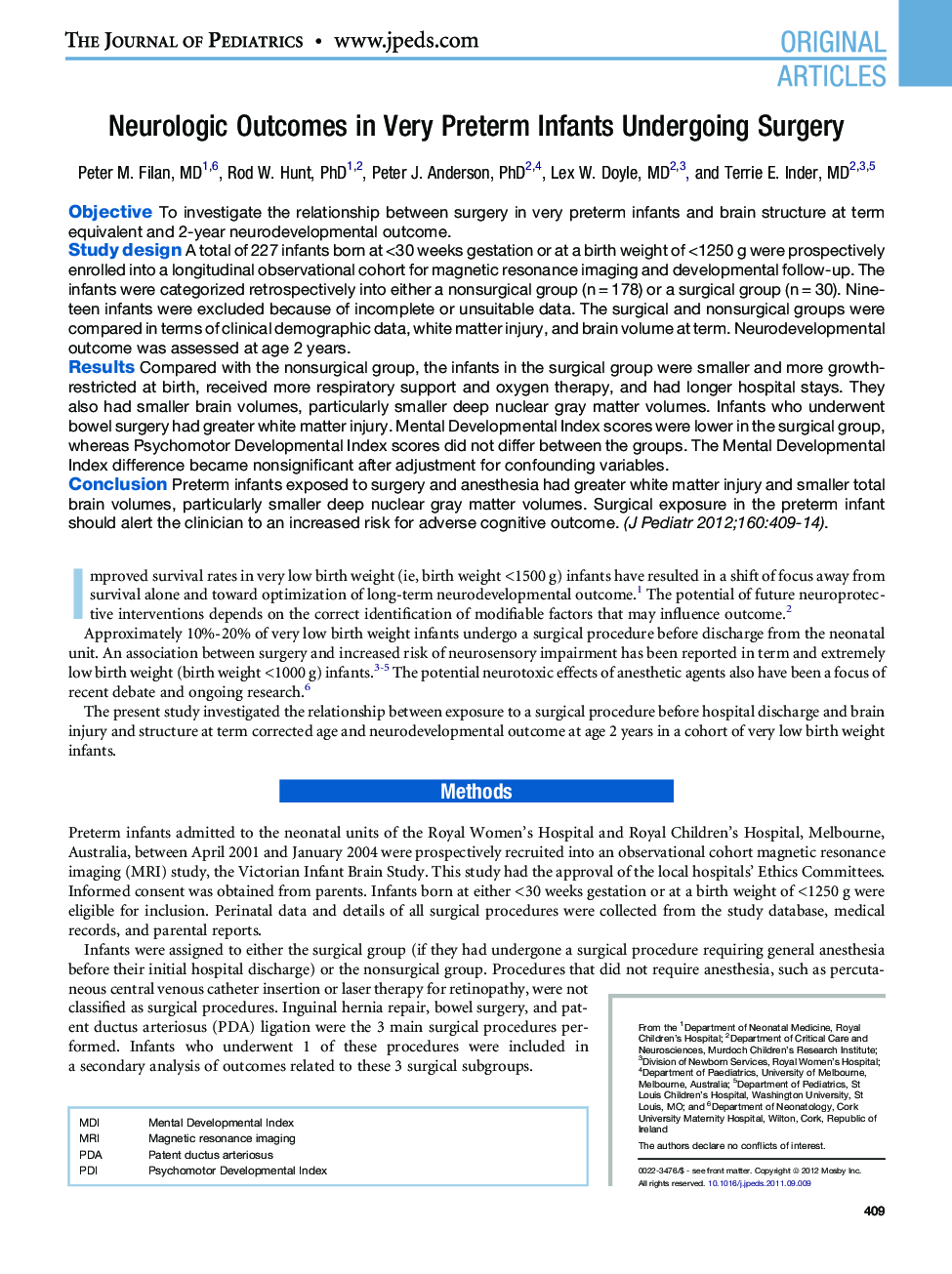| Article ID | Journal | Published Year | Pages | File Type |
|---|---|---|---|---|
| 6225279 | The Journal of Pediatrics | 2012 | 6 Pages |
ObjectiveTo investigate the relationship between surgery in very preterm infants and brain structure at term equivalent and 2-year neurodevelopmental outcome.Study designA total of 227 infants born at <30 weeks gestation or at a birth weight of <1250 g were prospectively enrolled into a longitudinal observational cohort for magnetic resonance imaging and developmental follow-up. The infants were categorized retrospectively into either a nonsurgical group (n = 178) or a surgical group (n = 30). Nineteen infants were excluded because of incomplete or unsuitable data. The surgical and nonsurgical groups were compared in terms of clinical demographic data, white matter injury, and brain volume at term. Neurodevelopmental outcome was assessed at age 2 years.ResultsCompared with the nonsurgical group, the infants in the surgical group were smaller and more growth-restricted at birth, received more respiratory support and oxygen therapy, and had longer hospital stays. They also had smaller brain volumes, particularly smaller deep nuclear gray matter volumes. Infants who underwent bowel surgery had greater white matter injury. Mental Developmental Index scores were lower in the surgical group, whereas Psychomotor Developmental Index scores did not differ between the groups. The Mental Developmental Index difference became nonsignificant after adjustment for confounding variables.ConclusionPreterm infants exposed to surgery and anesthesia had greater white matter injury and smaller total brain volumes, particularly smaller deep nuclear gray matter volumes. Surgical exposure in the preterm infant should alert the clinician to an increased risk for adverse cognitive outcome.
